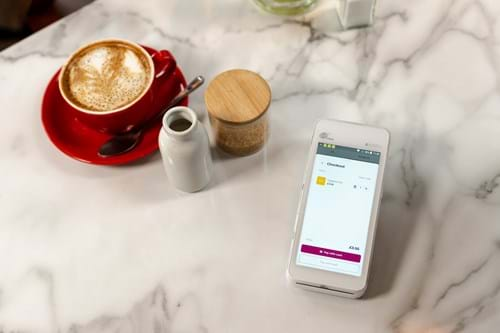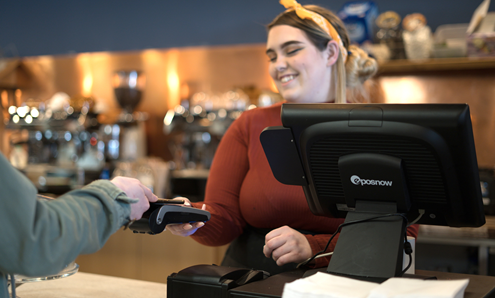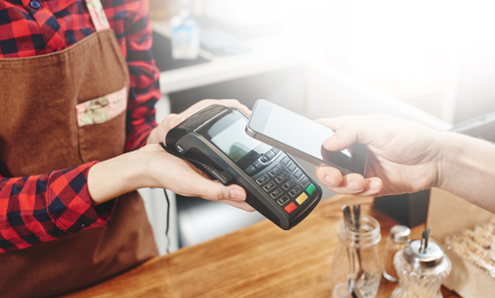Whether you’re grabbing a coffee, booking a flight, or shopping online, chances are you’ve been faced with a variety of payment options. But with so many methods available, choosing the right one for your business can sometimes feel overwhelming.
In February 2025, UK shoppers made over 1.4 billion contactless card transactions, but what other payment types should you consider for your business? In this guide, we’ll walk you through the most popular payment methods out there and give you the tips you need to decide which one works best for your business.
What are payment methods?
A payment method is the way that your customers pay for products or services. Whether in a brick-and-mortar store, online, or via the phone, there are now so many options available, but some of the most common are credit and debit cards, digital wallets, mobile payments, and even cash.
There’s no right or wrong payment method, but some can be more convenient for your customers and help you streamline your operations. By offering a range of options, you’re giving customers the flexibility to choose the one that suits them best, all while making it easier for your business to handle transactions.
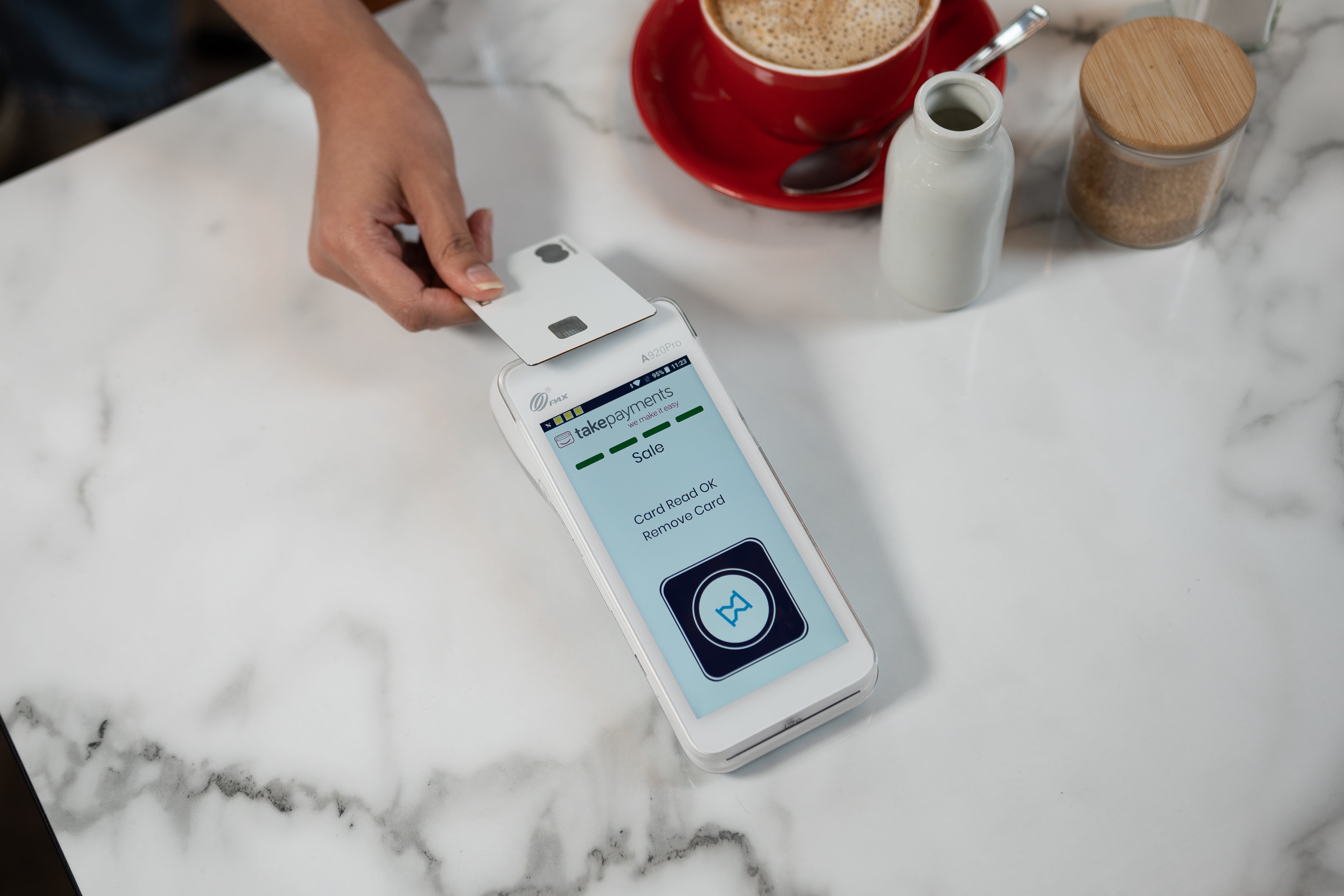
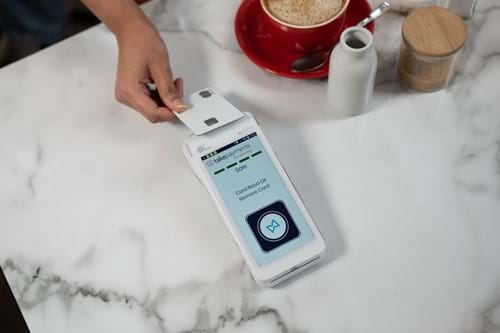
The benefits of offering multiple payment methods
Providing a range of payment methods can actually have a big impact on your business. Here’s how offering multiple payment options can benefit you and your customers:
- Increase sales – takepayments research found that 45% of shoppers have abandoned an in-store purchase if the payment system was down, highlighting the need for alternative options to ensure all customers can complete their transaction. More payment options = more sales.
- Boost customer satisfaction – Customers appreciate being able to choose how they want to pay. From contactless and mobile wallets to Buy Now, Pay Later, providing customers with their preferred payment method can improve their overall experience and increase loyalty.
- Reduce the risk of fraud – With rising concerns around card payment security, businesses that choose payment methods with strong authentication features can lower the chances of fraudulent transactions. For example, using multi-factor authentication can help protect your business while keeping customers’ sensitive information safe.
- Gain a competitive advantage – Offering a wide range of payment methods can set you apart from competitors who may still rely on more traditional options. It’s all about meeting customer expectations and offering them something they can’t get elsewhere.
Different types of payment methods
Here’s a breakdown of the most commonly used payment methods, with an overview of how they work and why they might be a good fit for your business.
| Payment Method | Best For | Key Benefits |
| Debit Cards | Every day, in-store, or online payments. | Familiar, secure, widely accepted. |
| Credit Cards | Larger purchases, splitting costs over time. | Increases average spend, flexible repayment. |
| Prepaid Cards | Budget control, younger customers. | No debt risk, easy to top up. |
| Contactless Payments | Quick in-store transactions. | Fast checkout, hygienic, popular for small purchases. |
| Digital Wallets | Tech-savvy customers, in-store and online. | Fast, secure, and added biometric security. |
| Phone Payments | Remote transactions, bookings, and phone orders. | Flexible, great for card-not-present sales. |
| Online Banking | Larger payments, B2B, and invoice payments. | Low fees, secure, good for high-value transactions. |
| Open Banking | E-commerce, fast online payments. | Real-time settlement, low fees, enhanced security. |
| Pay by Link | Remote payments, one-off invoices, and bookings. | Quick setup, secure, no extra equipment needed. |
| QR Codes | Hospitality, fast casual, events, and pop-ups. | Contactless, self-service, reduces staff pressure. |
| Buy Now, Pay Later | Retail, e-commerce, and younger audiences. | Flexible, can increase average order value. |
| Cash | Small, in-person purchases. | Instant, no processing fees. |
| Cheque | B2B, tradespeople, and larger invoice payments. | Paper trail, no card fees, familiar for some. |
1. Card payments
Debit cards
Debit cards are one of the most widely accepted forms of payment and are directly linked to the cardholder’s bank account. Debit cards are reliable, and the three top debit card networks are Visa, Mastercard, and Maestro.
They all function in the same way: the customer pays with their card through a card machine, via chip and PIN, contactless, over the phone, or online, and then the money is withdrawn directly from their bank account. This usually happens on the same day, but in some cases, it can take 48 hours for it to clear and show on your bank statement.
Our data found that 63% of people named debit and credit cards as their preferred payment methods when paying for something online.
Credit cards
Credit cards work similarly to debit cards, but the key difference is that customers borrow money from the card issuer, which they’ll need to pay back later.
When someone takes out a credit card, they’ll be given a credit limit — a maximum amount that they’re allowed to spend — and when they use it, they agree to pay back the balance, sometimes plus interest. Credit cards provide extra value to shoppers because they can be useful for splitting the cost of higher-value purchases over time. However, this comes with the risk of people spending money they don’t have and might struggle to repay.
Offering credit card payments can help boost average transaction values, as customers may spend more when using their credit cards. It’s also an excellent option for businesses looking to offer flexible payment terms to customers or who want to limit the amount of cash they have on their premises.
Prepaid cards
Prepaid cards function just like debit and credit cards, but instead of being linked to a bank account, they’re preloaded with a specific amount of money and can be topped up when needed.
They’re especially popular with younger people who might not have a bank account yet or those who prefer not to link payments directly to their account. While not as widely used as debit and credit cards, prepaid cards can be a great alternative for customers looking to control their spending, as you can only spend what’s on the card.
Contactless
Contactless card payments are possible using most credit and debit cards issued today. They allow customers to purchase things without entering their PIN — they simply hold their card near a card machine with contactless technology. Contactless payments can also be made with prepaid cards or smart devices, like phones and watches.
The convenience of tapping your card to make a payment has made contactless transactions extremely popular. Our research found that over half of UK consumers prefer to pay via contactless for in-person transactions (54%), and with more and more people expecting faster checkouts, they’re especially useful for small-value purchases in brick-and-mortar stores.
2. Digital wallets
Digital wallets, also known as e-wallets, are a secure and convenient way for customers to pay using their smartphones, tablets, or smartwatches. Special apps turn these devices into virtual ‘wallets’ that digitally store card details and other payment information, transforming them into contactless devices that can be used with contactless-compatible card readers.
The most widely used digital wallets are Apple Pay, Google Pay, and Samsung Pay, and they use technology like Near Field Communication (NFC) to process payments. To make a purchase, customers simply open their digital wallet app, authenticate the transaction with fingerprint or facial recognition or their phone passcode, and then tap their device near a compatible card reader.
E-wallets make contactless payments fast and secure, giving consumers the option to pay for a variety of goods and services, from coffee to flights, all without needing to carry a physical card. In 2025, our research found that 14% of shoppers named mobile wallets as their favourite payment method.

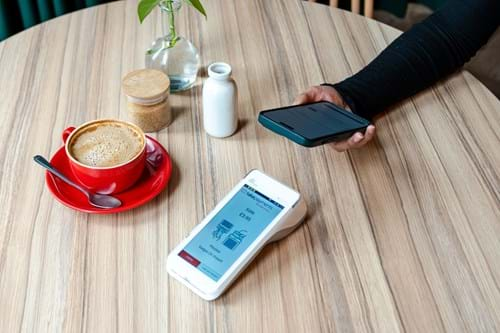
3. Phone payments
When it comes to accepting payments remotely or in situations where face-to-face transactions aren’t possible, phone payments and virtual terminals offer businesses a secure and convenient solution.
Phone payments allow customers to share their card details over the phone, which is perfect for businesses that need to process transactions without the customer being physically present. For example, if you’re a business accepting card-not-present transactions from customers all over the country.
Businesses will use a virtual terminal to accept these payments. These are secure online tools that let businesses manually enter a customer’s card details into a payment processing system through a web browser.
Learn more about safely accepting payments over the phone here.
4. Online payments
With internet speeds becoming faster each year and the world turning to digital solutions for everyday problems, it’s no wonder that online payment methods have become increasingly popular.
Online banking
Online banking, also known as internet banking, allows customers to transfer funds directly from their bank account to another account. With the correct payment details set up, shoppers can set up direct debits, standing orders, and one-off payments to family, friends, or businesses. Online banking also works the other way around too; users can also receive funds from others.
Unlike contactless transactions, online banking tends to be used for larger transactions. You can directly transfer funds without needing a third-party processor, making it a free and secure way to send and receive money from trusted sources.
It’s all done electronically via smartphone or a computer, so users won’t need to handle any physical cash.
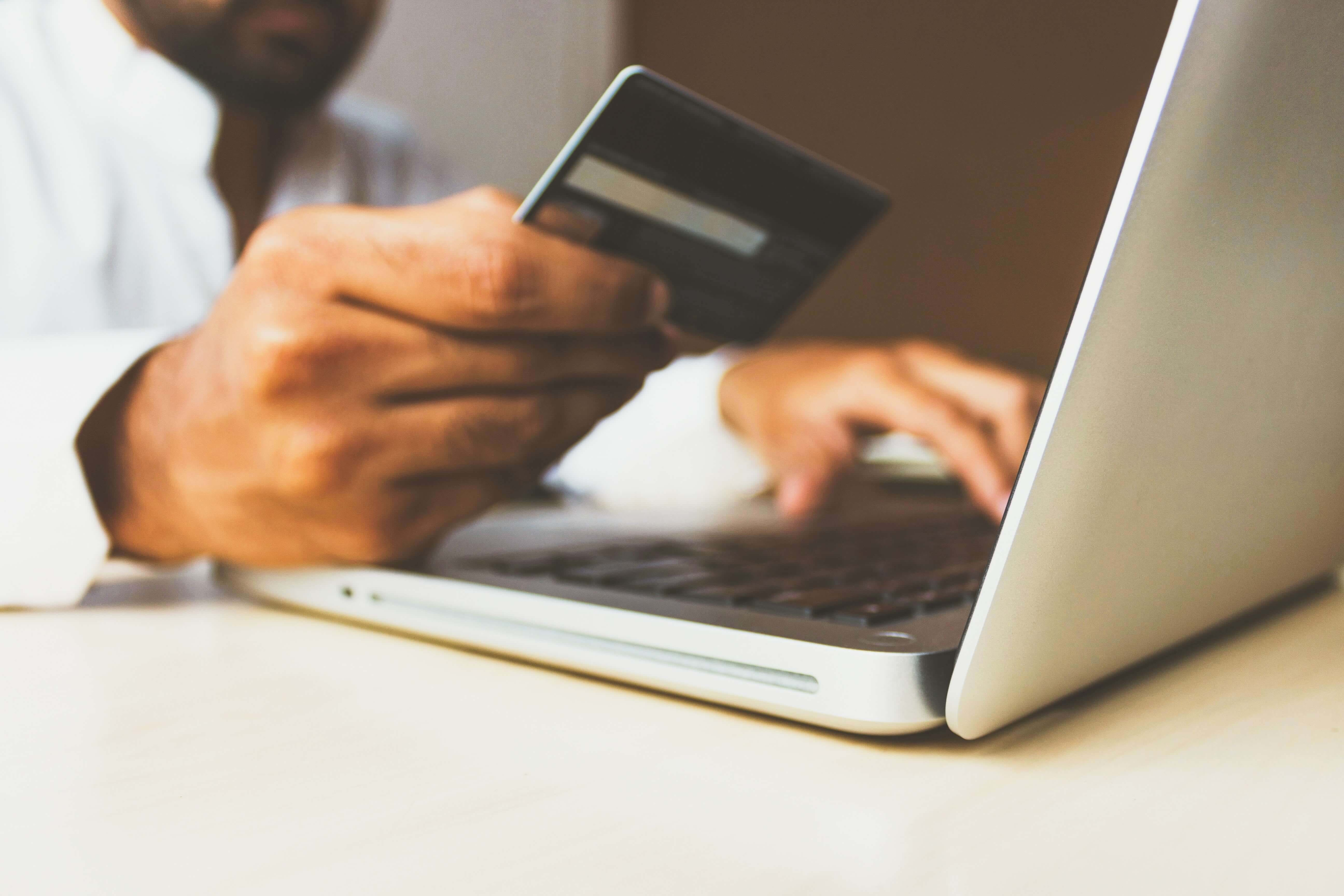

Open banking
Open banking is a relatively new way of making payments, but it’s gaining momentum, especially in the UK and across Europe. A recent study found that open banking adoption is at an all-time high, with 13.3 million active open banking users in the UK and one in five customers and businesses using it as of March 2025.
Open banking allows customers to securely share their bank data with trusted third-party providers to make payments or manage their money. Instead of manually entering payment details, users can make payments directly from their bank account using an app or website.
When buying something online, customers are securely redirected to their bank’s log-in page or banking app, where they’re asked to approve the transaction with an additional layer of authentication (usually a passcode or biometric method like a fingerprint or face ID). This replaces the traditional method of consumers having to manually enter their card details. The payment is processed instantly, making it a hassle-free transaction for both the customer and the business.
While open banking is still a relatively new concept for many customers, businesses are subtly integrating it into more and more checkout journeys. This allows them to receive payments in real time without their customers needing to use credit or debit cards.
Pay by link
A lesser-known online payment method is paying by link, which involves sending a secure payment link to customers via email or text. When the customer clicks on the link, they’re taken to a secure checkout page where they can enter their payment details to complete the transaction. This is a handy option for businesses that need to collect payments remotely.
As customers enter their details into a secure page and merchants don’t need any fancy equipment to take the payment, pay by link is compatible with all major credit and debit cards and can take the hassle out of paying for goods or invoices — just make sure your emails look legit; otherwise, people might be wary about handing over their details.
QR codes
Quick-response (QR) codes are a newer payment method that allows customers to purchase in both physical and digital spaces without physically interacting with a merchant or business.
Instead, a business generates a unique QR code that links to their payment page. When ready to pay, customers scan that code with their smartphone and are directed to a payment page where they can enter their card details to complete the transaction.
QR codes can be extremely beneficial for certain industries, like the hospitality sector. They can reduce staff contact with customers and alleviate pressure during busy periods. As diners can order whenever they want, they can also help speed up table turnover and increase sales.
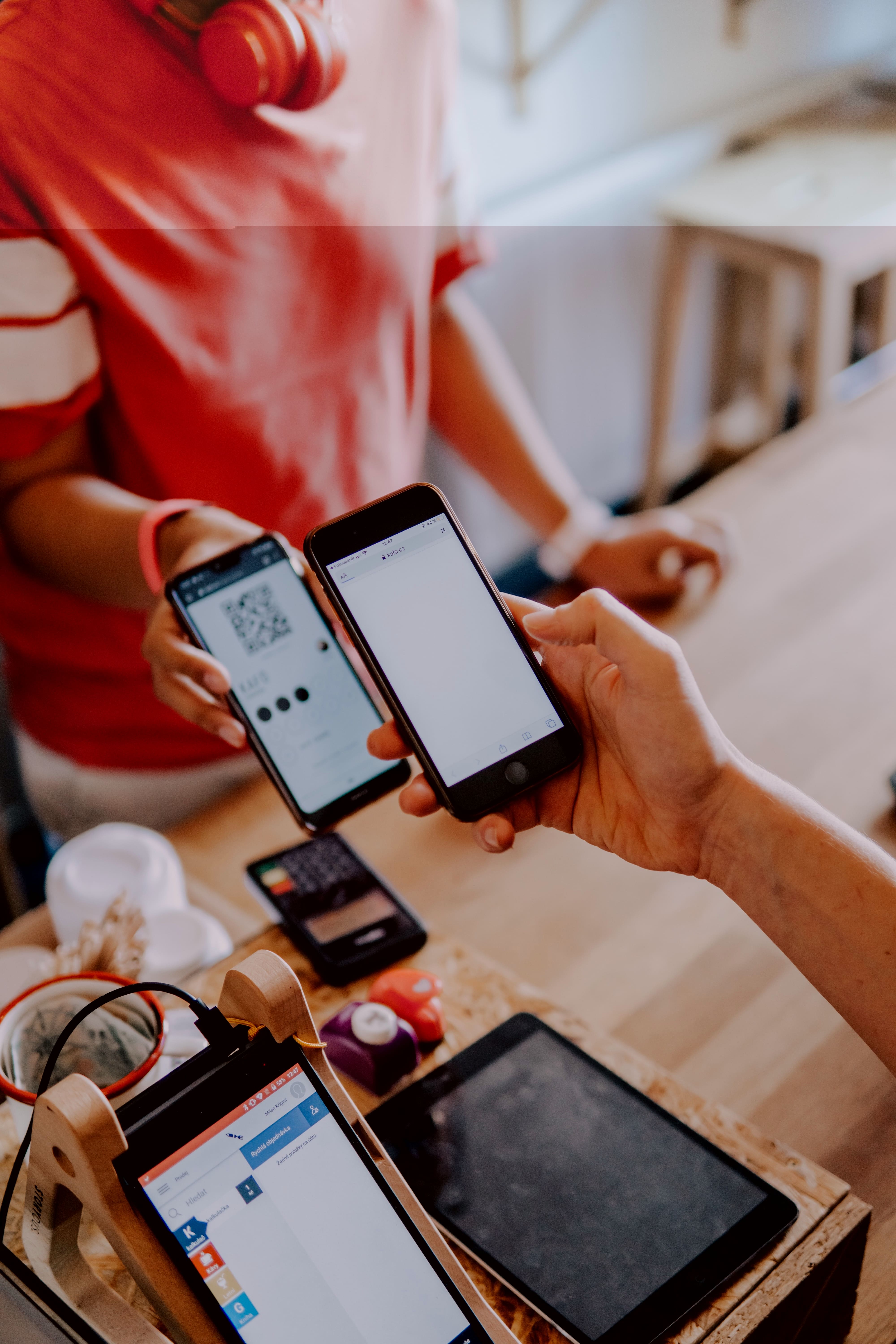
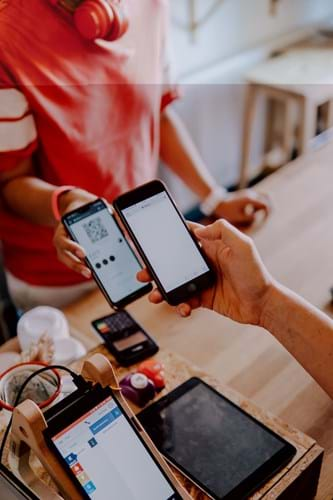
Buy Now, Pay Later (BNPL)
BNPL is a payment solution that allows customers to buy products or services and pay for them over time, either in instalments or after a short delay. When a customer selects BNPL at checkout, they can either pay in full after a specified period (usually 30 days) or split the cost into smaller, interest-free instalments. The BNPL provider then pays the merchant upfront, and the customer repays the BNPL provider over time.
Buy Now, Pay Later is essentially a loan system, like a credit card, that lets customers make purchases without having the exact funds in their account at checkout.
BNPL is widely available on many ecommerce stores, and its popularity has skyrocketed in recent years during times of financial difficulty; 42% of UK adults have used BNPL services at some point, and it’s most popular with those aged between 28-43. This makes a worthwhile payment method for businesses selling to this audience.
5. Cash
Despite newer, digital methods gaining traction, cash remains a familiar and widely accepted payment method.
It’s immediate, straightforward, and doesn’t require any processing fees, making it a reliable option for certain businesses, especially those dealing with low-value purchases or where digital infrastructure isn’t readily available. It can be especially valuable for customers who want to stick to a strict budget, as handing over physical money makes it easier to keep spending in check, but it’s also useful for businesses who want to avoid card fees and get instant access to funds.
takepayments research found that cash is still the second preferred payment method of choice for UK consumers when paying in person, with 22% of people choosing cash, putting it just behind contactless and ahead of other options.
It’s been around for thousands of years and is one of the earliest recorded forms of currency, and shows little sign of falling out of popularity completely.
6. Cheque
Although research shows they’ve fallen by 14% in recent years, cheques still occasionally pop up for certain types of transactions, particularly for business-to-business (B2B) payments.
A cheque is a slip of paper written, dated, and signed instructing a bank to pay a specific amount from the payer’s account to the payee. Given their nature, they’re often used to pay bills or by tradespeople handling large sums of money, making it more convenient than handing over cash.
How to choose the right payment method for your business
Selecting the right payment methods for your business is not just about offering the most popular options — it's about selecting methods that match your business model, your customers' preferences, and your growth plans.
Here are some key factors to consider when deciding which payment methods will work best for you:
Location
You might not think it, but your business's location plays a big role in deciding which payment methods to offer. Payment preferences can vary from country to country and even by region.
For example, mobile wallet payments like Apple Pay and Google Pay are widely used in the UK and US, but mobile payment adoption is actually much higher in countries across Asia-Pacific (APAC) than in some parts of Europe. In fact, e-wallets are now the preferred payment method for online shopping in many parts of Asia, with their popularity spilling over into physical stores as well.
This could be down to the fact that many governments in APAC have been working to integrate their payment systems and encourage the adoption of mobile wallets instead of using cash. A key contributor is the rise of QR code payments, which allow consumers to easily pay for goods and services across borders without needing to worry about currency conversion or differing payment methods.
Before implementing any payment method, it’s important to research which options are most commonly used in your target market.
Business type
Consider your business model and your customers' specific needs. Are you a subscription-based service, an e-commerce platform, or a traditional retail store? The nature of your business will also dictate which methods make the most sense for your operations.
- E-commerce businesses – These will benefit most from offering a range of online payment options like credit and debit cards, PayPal, Buy Now, Pay Later, and digital wallets. They need payment methods that provide seamless, secure transactions from anywhere.
- Subscription-based businesses – These may want to focus on recurring billing solutions and automatic payments. Methods that handle regular transactions, like credit cards or direct debit, are essential for managing timely transactions and reducing churn.
- Retail and hospitality businesses – These businesses might want to prioritise in-person payment methods such as card payments and mobile wallets. They may also want to include options for tipping and adding gratuities.
Purchase method
Consider whether your business primarily deals with in-store or online transactions (or a combination of both):
- Online-only businesses – E-commerce businesses could focus on secure and convenient digital payment methods such as credit and debit cards, online banking, Pay by Link, and digital wallets. They may also want to integrate fraud protection tools and ensure seamless checkout experiences for customers.
- In-store retailers – Brick-and-mortar stores may want to prioritise physical payment methods like contactless cards, chip and PIN, and mobile wallets, allowing quick and easy transactions. You may also want to consider offering cash payments, especially if your target customers prefer that option.
Security and compliance
Security and compliance should be top considerations when selecting payment methods. Compliance with relevant data protection and privacy regulations, like the PCI DSS standards, is crucial to protect your business and customers' sensitive information. Methods that offer strong customer authentication (SCA), encryption, and multi-factor authentication (MFA) will help protect your business and your customers from fraud.
Some payment methods, like credit card payments, will also require additional security features, like 3D Secure for online transactions, so it’s essential to consider how these methods will impact your customers' experience while maintaining the highest level of security.
Find out more about card payment security and compliance here.
Scalability
As your business grows, so will your payment needs. Choose payment methods that can scale with your business and easily integrate with your existing systems, from POS systems to accounting software or e-commerce platforms.
For example, if you’re an e-commerce business planning to expand internationally, make sure the payment processor you choose can support multiple currencies and provide an option for local payment methods in key markets.
The best payment methods for business types
| Business Type | Recommended Payment Methods |
| Retail (in-store) | Debit & credit cards (chip & PIN, contactless), mobile wallets, cash, BNPL (for larger items). |
| E-commerce | Debit & credit cards, digital wallets, Pay by Link, Open Banking, BNPL. |
| Hospitality | Contactless cards, mobile wallets, QR codes, cash, phone payments for bookings, BNPL for events or larger bookings. |
| Subscription services | Recurring billing via debit/credit cards, direct debit, online banking, PayPal or digital wallets. |
| Service-based businesses | Online banking, debit & credit cards, phone payments with virtual terminals, Pay by Link for invoices. |
Find a payment method for your business with takepayments
No two businesses are the same, and neither are your customers. That’s why offering the right mix of payment methods can make a real difference — helping you boost sales, keep customers happy, and stay ahead of the competition.
At takepayments, we’re here to make accepting payments simple, secure, and tailored to your business. From card machines and contactless payments to online, phone, or pay by link — we’ll help you find the right fit.
Get in touch with our team of experts today at 0808 274 2017 to find out how we can help.



